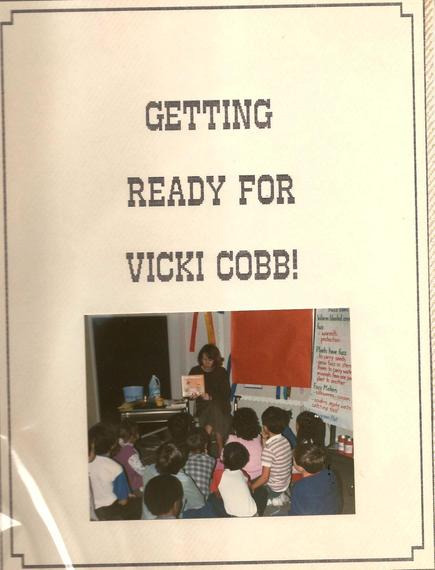In my long career as a children's science book author, I have made many school visits, speaking to between 15,000 and 20,000 children every year. I do assembly programs designed to turn kids on to science and to motivate them to get involved in reading in general and reading my books in particular. With one exception, my school visits require that I perform. It is this one exception that I want to talk about. The school I visited perfectly fulfilled the Common Core State Standards years before it was a twinkle in education reformers' eyes.
I was invited to Cummings Elementary School in Alief, Texas back in 1986. Cummings was one of those Eisenhower Award schools. (I'm not certain if the award is still given.) The building was fairly new and the teachers were rightly proud of it since they had been consulted heavily about the design. (Imagine that! Consulting teachers!) Every classroom opened onto an atrium -- the heart of the school -- the library. The mission of the school, among other things was and is to encourage independent and creative thinking and produce life-long learners. The thing that made this gig so different from all others was that I was invited to be an audience of one to view what the students had done from studying my books, most of them now out of print. They were not hiring me for my performance. Each grade level had chosen a different book and had created a lot of projects and activities around it. The results were on display throughout the school.

The first graders did the activities from Gobs of Goo. They made glue and mayonnaise and bubbles, among other things. The second graders did Lots of Rot. One boy wrote:
"A grape grows gray mold. An onion grows black mold. Cake grows rhizopus mold. Cheese grows blue mold. Meat grows green mold. They all smell awful!"
The third graders made paper and string from Fuzz Does It! and put on a science fair. The fourth graders did a magic show from Magic.....Naturally! (a book of magic tricks based on science), which they performed for all the other students during the day as I watched and applauded And the fifth graders did tricks from Bet You Can't and Bet You Can! with much verve and enthusiasm. (These books live on in my new book We Dare You!)
As I walked through that beautiful library and hallways festooned with displays of all the work the kids had done from my books, I was deeply touched and honored. What a validation of my work! This was my dream fulfilled! How do I remember it so well? The school produced a book for me entitled, "Getting Ready for Vicki Cobb." It's in my lap right now as I write this. It contains samples of work from students representing each grade level. The teachers had fun making up their own lessons around the text. They brainstormed with each other on how to use the books. There was no teachers' guide for them or scripted study questions. They enjoyed using their own insights and creativity. 
But the biggest bonus was the surprise lesson the teachers learned from this venture: They had never gotten so much writing out of the kids as they did when they had to write up their science projects. Think about it. Writers, even kids, have two problems. The first is having something to say. The second is finding a way to say it. Obviously you can't do the second without the first. Doing a science activity is a specific, finite act with a beginning, a middle, and an end. Students can use the way it is written in the book as a model. But they can also put their own spin on it because they have actually experienced the activity. The Cummings faculty decided that they would routinely incorporate hands-on science activities in writing lessons in the future. Can you understand my frustration with schools that say they don't have time to teach science because they're too busy teaching reading and writing?
In doing this work the children listened, spoke, read and wrote -- the key skills embodied in the CCSS. Literacy activities were embedded in content. Inquiry and collection of empirical evidence, inherent to the discipline of science ,were seamlessly integrated with ELA skills. The teachers didn't have to waste time filling in checklists to prove that they had met these standards because they are internalized in high-quality teaching. Today, in the mad, obsessive collection of data, an unnecessary meta activity that takes precious time away from instruction, we are losing the art of teaching, so meaningfully on display almost thirty years ago.
Those kids are all grown up now. I'll bet they all read and write and think quite well.
